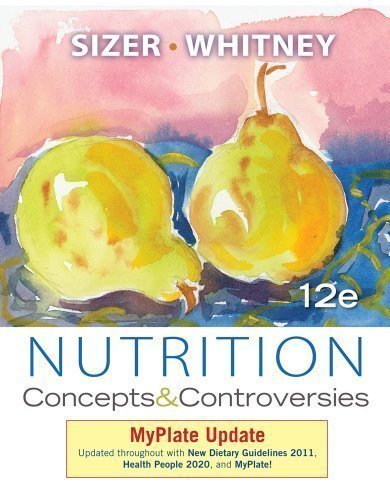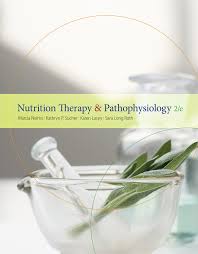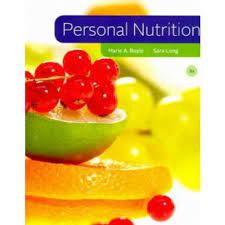Test Bank For Nutrition Concepts and Controversies MyPlate Update 12th Edition By Frances Sizer
Original price was: $55.00.$15.00Current price is: $15.00.
Test Bank For Nutrition Concepts And Controversies MyPlate Update 12th Edition By Frances Sizer is one of the most popular Test Banks for students studying nutrition. Test Bank For Nutrition Concepts And Controversies MyPlate Update 12th Edition By Frances Sizer covers all the key topics in nutrition, including the nutrients required for good health, the role of diet in disease prevention, and the controversies surrounding fad diets and food additives.
Test Bank For Nutrition Concepts And Controversies MyPlate Update 12th Edition By Frances Sizer is an essential resource for any student who wants to succeed in their nutrition course. Test Bank For Nutrition Concepts And Controversies MyPlate Update 12th Edition By Frances Sizer is available now. Order your copy today!
Digital item No Waiting Time Instant Download
ISBN-13: 978-0538734943 ISBN-10: 0538734949
Description
Test Bank For Nutrition Concepts and Controversies MyPlate Update 12th Edition By Frances Sizer
Chapter 2 – Nutrition Tools—Standards and Guidelines
Chapter Learning Objectives
2.1 Explain how RDA, AI, DV, and EAR serve different functions in describing nutrient values and discuss how each is used.
2.2 List the major categories of the Dietary Guideline for Americans and explain their importance to the population.
2.3 Describe how foods are grouped in the USDA Food Guide and MyPyramid.
2.4 Describe the concept of the discretionary calorie allowance, and explain how it can be used in diet planning.
2.5 Plan a day’s meals that follow the pattern of the USDA Food Guide within a given calorie budget.
2.6 Define the term functional foods, and discuss some potential effects of such foods on human health.
True/False Items
L.O.# Ans. Page #
2.1 T 30 1. So far, the DRI Committee has published recommendations for the vitamins and minerals, along with those for carbohydrates, fiber, lipids, proteins, water, and energy.
2.1 F 30 2. Currently, the DRI values for the minerals sodium and potassium, and other food constituents, are forthcoming.
2.1 T 32 3. On average, one should try to get 100% of the DRI for every nutrient to ensure an adequate intake over time.
2.1 T 34 4. The primary difference between recommendations for nutrient intakes and values set for energy intake is that the value for energy intake is not generous.
2.1 F 34 5. The DRI are international guidelines that are used around the world.
2.1 T 34-35 6. Nutrient contents of packaged foods are stated on food labels as Daily Values.
2.2 T 35 7. The United States is among many countries that establish and publish guidelines for appropriate nutrient intakes.
2.3 F 46 8. One of the major disadvantages of the USDA Food Guide is that it cannot be adapted to other national and cultural cuisines.
2.5 T 49 9. The exchange list system highlights the fact that many meats contain more calories from fat than from protein.
2.1 F 31 10. The absence of a Tolerable Upper Intake Level for a nutrient implies that it is safe to consume in any amount.
Comprehension-Level Multiple-Choice Items
L.O.# Ans. Page #
2.1 b 30, 33 1. Which of the following statements is not true about the DRI?
a. The committee that publishes them is comprised of nutrition experts.
b. They are minimum requirements, not recommendations.
c. They are based on review of available scientific research.
d. They are for individuals who are healthy.
2.1 b 31 2. If a nutrient does not have a Tolerable Upper Intake Level, this means that:
a. it is safe to consume in any amount.
b. insufficient data exist to establish a value.
c. no caution is required when consuming supplements of that nutrient.
d. it is safe when supplemental levels are added to foods.
2.1 d 31 3. Which of the following establishes population-wide average requirements used by nutrition policymakers?
a. Recommended Dietary Allowances
b. Daily Values
c. Recommended Daily Allowances
d. Estimated Average Requirements
2.1 c 31 4. The DRI Committee recommended a diet that contains _____% of its calories from carbohydrate.
a. 10-35
b. 20-35
c. 45-65
d. 50-70
2.1 a 33 5. The Dietary Reference Intakes (DRI) are appropriately used for all of the following except:
a. estimating the nutrient needs of persons with medical problems.
b. estimating the adequacy of an individual’s nutrient intake.
c. planning diets for population groups like military personnel.
d. ensuring that minimum nutrient requirements are met.
2.1 e 33 6. What are the DRI designed for?
a. health maintenance
b. restoration of health
c. disease prevention
d. a and b
e. a and c
2.1 b 35 7. The Daily Values reflect the needs of an “average person” consuming between _____ calories a day.
a. 1,500 and 2,000
b. 2,000 and 2,500
c. 2,500 and 3,000
d. 3,000 and 3,500
2.2 b 35 8. The Dietary Guidelines for Americans are intended for healthy adults and children ages _____ and older.
a. one
b. two
c. three
d. four
2.2 d 35 9. A major guideline for healthy people is to limit calorie intakes and obtain more and varied selections of _____.
a. fruits and vegetables
b. whole grains
c. nonfat or low-fat milk or milk products
d. all of the above
2.2 d 35,36 10. According to the Dietary Guidelines for Americans, the most healthful diet:
a. is low in saturated fat.
b. provides needed fats and oils.
c. is moderate in cholesterol.
d. a and b
e. b and c
2.1 b 35,50 11. Which of the following is characteristic of Daily Values?
a. They provide nutrient values by categories of people.
b. They are ideal for allowing comparisons among foods.
c. They are useful as nutrient intake goals for individuals.
d. They provide information on all DRI nutrients.
2.2 b 36 12. The types of physical activity recommended by the Dietary Guidelines for Americans include all of the following except:
a. cardiovascular conditioning.
b. endurance exercises.
c. resistance exercises.
d. stretching exercises for flexibility.
2.2 e 36-37 13. The Dietary Guidelines encourage Americans to consume less:
a. refined grains.
b. fruits.
c. added sugars.
d. vegetables.
e. a and c
2.3 d 37 14. Characteristics of food groups plans include all of the following except:
a. they sort foods into groups based on nutrient content.
b. they specify that people should eat a certain minimum number of servings from each group.
c. the USDA Food Guide utilizes a food group plan.
d. they organize foods with respect to their nutrient contents and calorie amounts.
2.3 d 37 15. Food group plans primarily dictate:
a. particular foods to choose each day.
b. appropriate portion sizes for foods.
c. estimates of the amounts of carbohydrate, protein, and fat in foods.
d. numbers and sizes of servings to choose each day.
2.3 c 38 16. Based on the USDA Food Guide, at least _____ of the foods from the fruit group eaten each day should be whole fruits rather than fruit juices.
a. 1/3
b. ¼
c. ½
d. 2/3
2.3 c 38-39 17. Which of the following foods do not fit into any of the five major food groups in the USDA Food Guide?
a. yogurt, legumes, and cheese





Be the first to review “Test Bank For Nutrition Concepts and Controversies MyPlate Update 12th Edition By Frances Sizer”